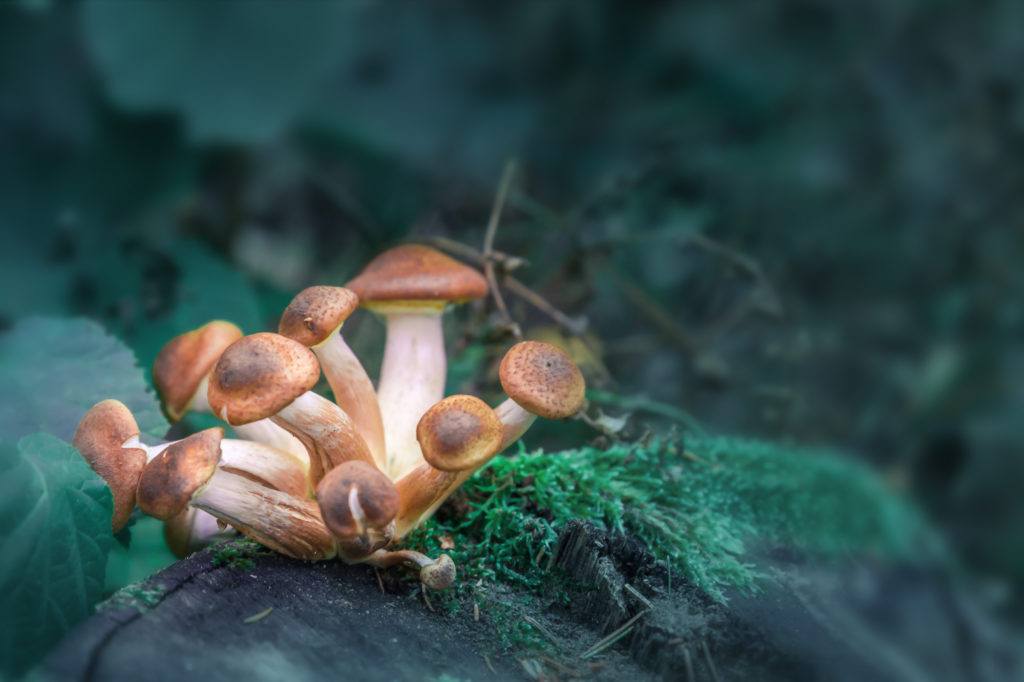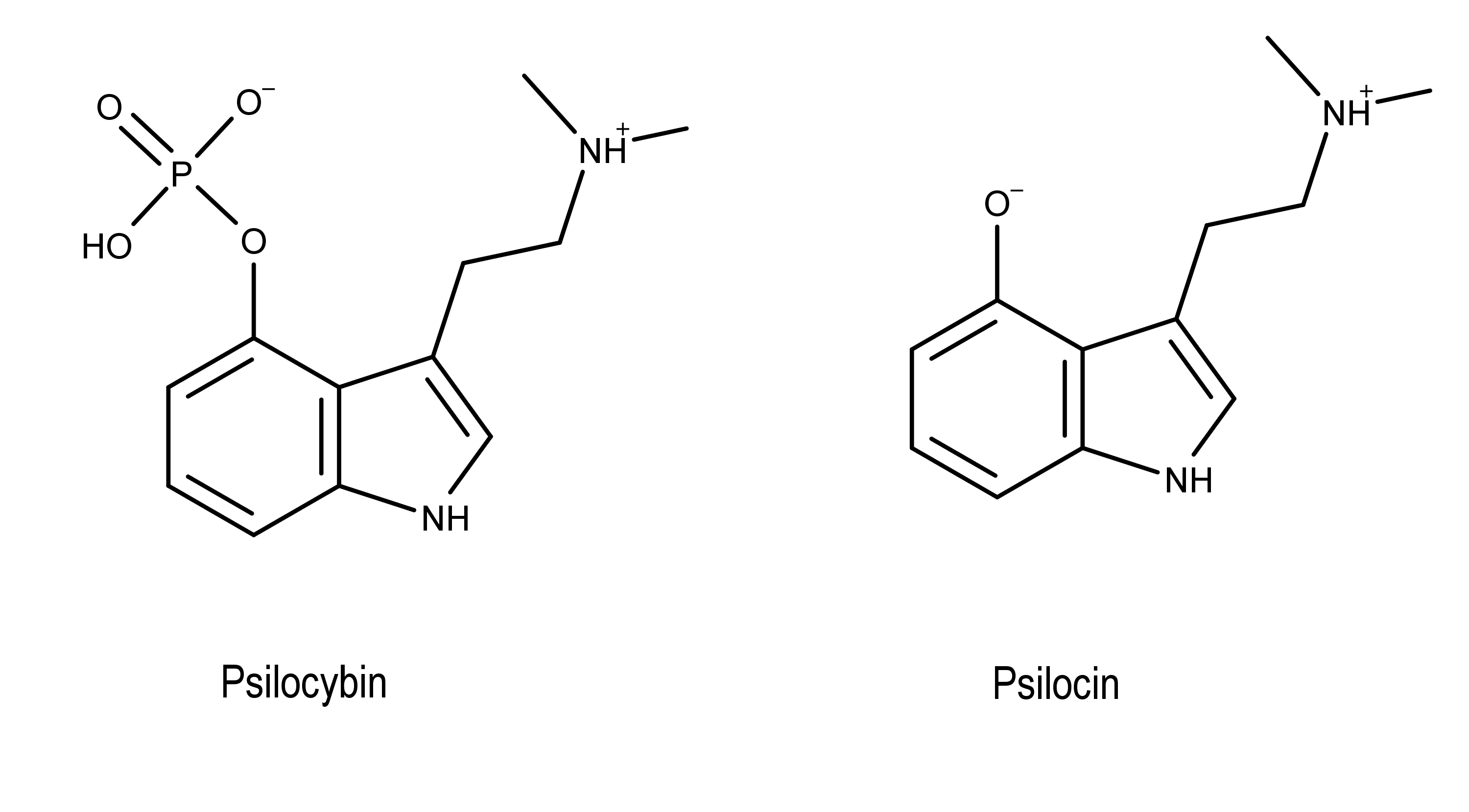
So-called magic mushrooms (also known as shrooms or psilocybin mushrooms) are known to cause a psychoactive effect when ingested by humans. Archeological evidence supports the use of these magic mushrooms dating all the way back to 3000 BCE. Some known effects of consuming mushrooms include altered perceptions, hallucinations, disorganized thinking, anxiety, and an altered perception of time.1 For the most part, all of these effects are attributed to the molecule psilocybin. However, as we understand the chemistry at this time, psilocin is the molecule responsible for most of the psychoactive properties in magic mushrooms.
- Psilocybin refers to the molecule (4-phosphoryloxy-N,N-dimethyltryptamine, or [3-(2-trimethylaminoethyl)-1H-indol-4-yl] dihydrogen phosphate).
- Psilocin refers to the molecule 4-hydroxy-N, N-dimethyltryptamine.
The molecular structures of psilocybin and psilocin are pictured below.

Psilocybin and psilocin are two different molecules found in magic mushrooms.
Psilocybin is a Means for Ingesting Psilocin
Although psilocybin receives most of the credit for affecting mood and perception, psilocin is probably the molecule actually responsible for producing the psychoactive effects. Consider these facts:
- Psilocin is psychoactive but not stable.2,3 It degrades quickly in the presence of air, heat, and/or light. This makes sense because the 4-hydroxy group on the tryptamine is susceptible to oxidation.
- Psilocybin is not psychoactive. But, it is far more stable than silicon. Unlike psilocin (which has 4-hydroxy group on the tryptamine ring system), psilocybin has a phosphate ester in this position. That phosphate ester protects the molecule from degradation (e.g., oxidation), making psilocybin more stable than psilocin.
- Psilocybin is easily converted into psilocin. When psilocybin is ingested (e.g., by eating mushrooms or mushroom preparations) it is rapidly converted into psilocin. The conversion of psilocybin into psilocin can occur under either acidic conditions and/or enzymatic dephosphorylation by alkaline phosphatase enzymes.
Overall, the most reasonable theory is that a person ingests psilocybin (e.g., by eating mushrooms containing psilocybin) as a means of administering psilocin. In other words, a person takes psilocybin, which is converted into psilocin, which produces the observed psychoactive effects.
Psilocin is Different From Psilocybin
Practically speaking, taking psilocybin provides a means for administering a psilocin equivalent. A user takes one molecule of psilocybin and (after some metabolism and chemistry) receives one molecule of psilocin, which provides the majority of the psychoactive effects.
However, although psilocybin can be viewed as a psilocin equivalent, the two are not exactly the same. To be clear, they are different molecules. Accordingly, the effects of administering psilocybin will not be exactly the same as administering psilocin.
One critical difference is that administering psilocybin requires the subject to wait for the dephosphorylation reaction to take place. That means that the pharmacokinetics for psilocybin are necessarily different than for psilocin. Various anecdotal experience reports on sites such as Erowid and Bluelight (comparing subjective effects from mushrooms differing in their relative amounts of psilocybin versus psilocin) supports the notion that these two molecules may produce different effects. How different? No one knows.
